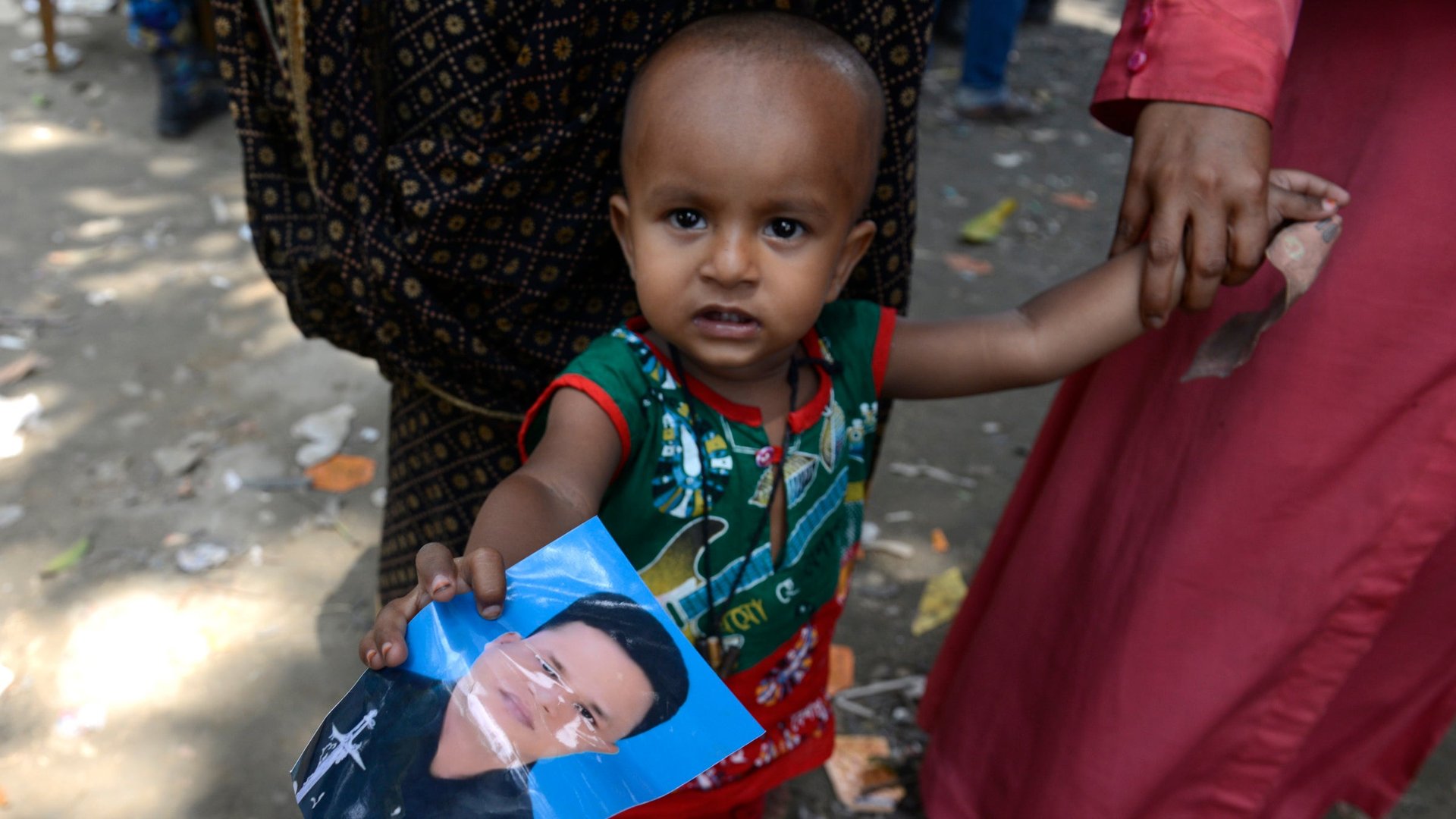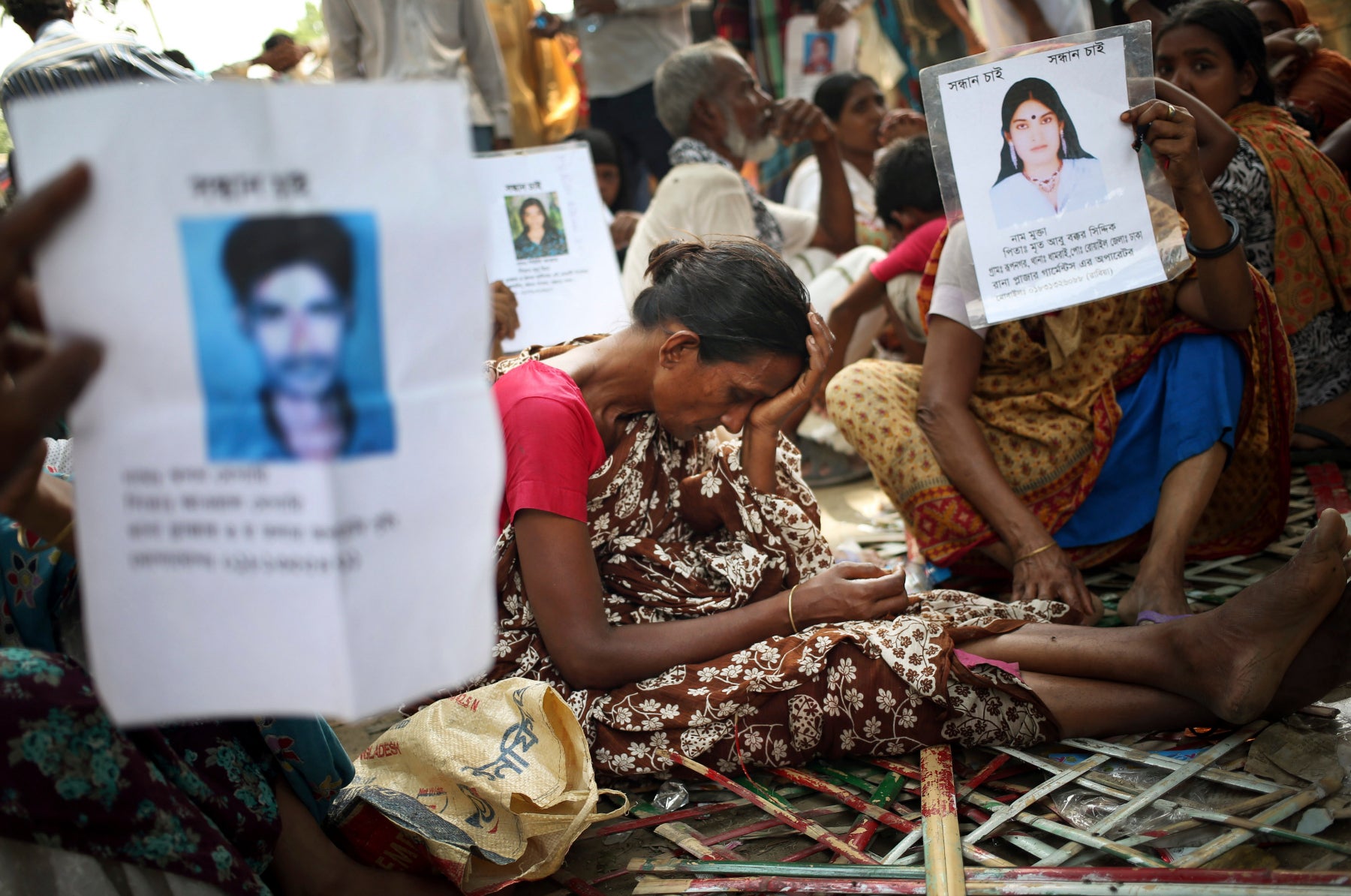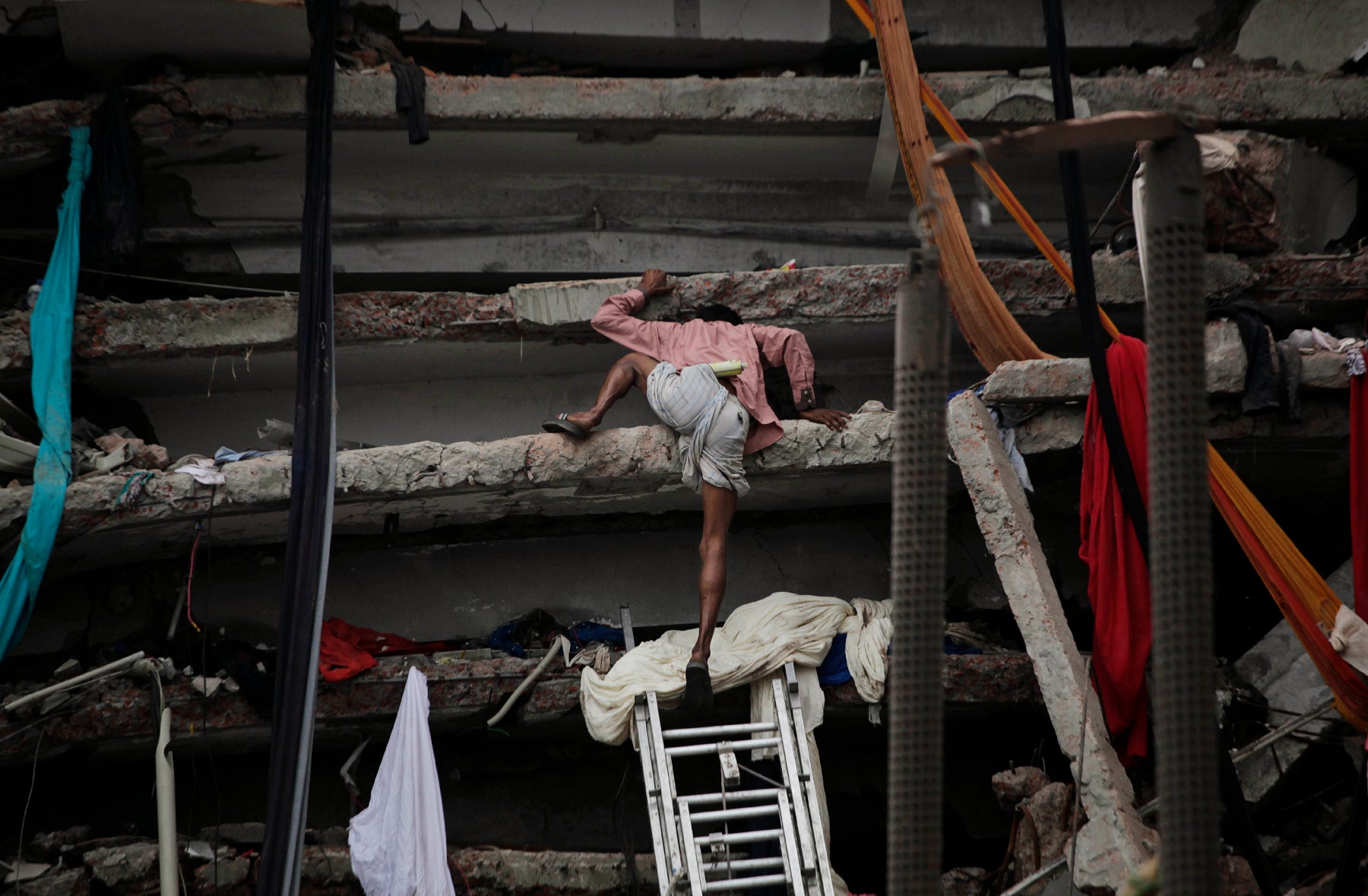Bangladeshi factory worker’s wife: “I want his body so my 2-year-old son can see the graveyard of his father”
It’s been nine days and we know nobody is coming out alive anymore. But family members still wait outside hoping for at least a body.


It’s been nine days and we know nobody is coming out alive anymore. But family members still wait outside hoping for at least a body.
Nearly 1,000 garment workers remain unaccounted for in the worst industrial accident Bangladesh has ever seen. Since the collapse of the building known as Rana Plaza, student volunteers from Jahangirnagar University compiled a list of the missing, more than 1,350 names. As of today, only 425 bodies had been recovered.
These are some of the stories of those who have been waiting:
Karina Begum, 25, is one of the many who has been waiting for rescue of her husband Isarif from the very first day of the building collapse. Now she is almost sure that her husband won’t return alive.
“At the very least, I want his body so my 2-year-old son can see the graveyard of his father,” she says.
She stands in front of the building clutching a photograph of her husband. Begum was also working in the same building the day it collapsed. “We were in third and fourth floor of the building. I could come out unhurt during the incident, but my husband couldn’t,” she says.

Zillur Rahman has been waiting to find his wife Lipi Akter, who worked in one of the factories housed in the building. He has been looking for the past week.
Rahman tried to enter the rubble even as a rescue operation was going on with heavy equipment. A dog squad has also been dispatched to find bodies.
“We have no lands in the village. Both of us wanted that our son will get good education. So, we left home for this capital to get a job,” says Rahman. “But the elusive dream has made my son an orphan.”

Jahid Sheikh, father of garment worker Amena Khatun, stood near Jurain graveyard with her voter ID card and photograph in hand.
“I live in the village. My daughter has been working as machine operator in a Rana Plaza factory for the last 2 1/2 years. Seeing the news of collapse of the factory building, I came here seven days ago but couldn’t trace her,” said Sheikh, who lives in Gopalganj district.
“I know I won’t get her alive after eight days of the incident,” he says. “But I want to make her burial myself if the dead body is found.”

Family members of Fahima Akter, another worker in the building, identified her decomposed body yesterday—as it was brought to the graveyard for a mass funeral.
Her brother, Siddique, and sister, Farida, have been running between the collapse site and nearby hospitals to find her. Her body was at Dhaka Medical College Hospital earlier in the week, but they couldn’t identify her. Then they brought her to the graveyard. She was not recognizable but, “when the government people brought her body for burial, we could identify her by seeing the dress,” Siddique says.
Akter was the fourth among six siblings. She previously worked at Tazreen Fashions, the site of the deadly fire in November that killed 112 workers. Three days before the fire, she reported to a job at Rana Plaza.